Indirect Illumination
This page introduces Indirect Illumination in V-Ray for 3ds Max.
Section Contents
Page Contents
Overview
Indirect illumination refers to illumination that results from the bounced light in a scene, as opposed to illumination directly from light sources. Global illumination (GI) refers to the computation of this effect through computer graphics.
V-Ray implements several approaches (called engines) for computing indirect illumination with different trade-offs between quality and speed. The engine selected as the primary is used to compute the first light bounce, while the secondary engine is used to compute any subsequent bounces. A primary diffuse bounce occurs when a shaded point is directly visible by the camera, or through specular reflective or refractive surfaces. A secondary bounce occurs when a shaded point is used in GI calculations. These engines can be combined in a number of ways to get the desired result in the minimum time.
The primary and secondary GI engines are selected in the Global Illumination rollout under the GI tab in the Render Setup window.
The following types of indirect illumination engines are supported in V-Ray for 3ds Max.
-
Brute Force GI - The simplest approach where indirect illumination is computed individually for each shaded surface point.
-
Irradiance Map - Indirect Illumination is computed for a few points in a scene, and remaining points use interpolated values. Built adaptively but is view-dependent.
-
Global Photon Map -Traces photons emitted by lights in the scene. View-independent. Less accurate with details but is fast to compute.
-
Light Cache GI - Traces multiple paths from the camera. View-dependent, but handles details and corners better.
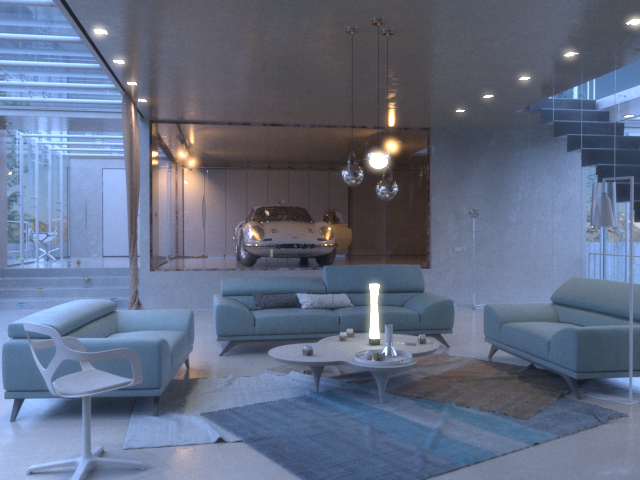
Comparison of GI Engines
Here is a quick comparison of GI engines. See the topic for each engine for more information.
|
|
Overall |
Load/Save |
Retains fine |
Overall |
Handles bump |
Skylight |
Requires Additional |
Distributed Rendering |
|
Brute Force |
Slow |
No |
Yes |
High |
Yes |
Yes |
No |
Yes |
|
Irradiance Map |
Fast |
Yes |
Maybe |
Low |
Yes |
Yes |
Yes |
Yes |
|
Light Cache |
Fast |
Yes |
Yes |
Low |
No |
Yes |
No |
Yes |
Brute Force
Brute force is the simplest approach; indirect illumination is computed independently for each shaded surface point by tracing a number of rays in different directions on the hemisphere above that point. For more information, see the Brute Force GI topic.
Advantages:
-
Preserves all the detail in the indirect lighting, for example with small and sharp shadows.
-
Free from defects like flickering in animations.
-
Does not require additional memory.
-
Indirect illumination for motion-blurred moving objects is computed correctly.
-
GI calculations can be distributed over multiple machines using Distributed Rendering (DR).
Disadvantages:
-
The approach is very slow for complex images such as interiors with numerous light sources.
-
Brute Force tends to produce noise in the rendering, which can be avoided only by shooting a larger number of rays, thus slowing it even more.
Irradiance Map
This approach is based on irradiance caching; the basic idea is to compute the indirect illumination only at some points in the scene, and interpolate for the rest of the points. For more information, see the Irradiance Map topic.
Advantages:
-
The irradiance map is very fast compared to direct computation, especially for scenes with large flat areas.
-
The noise inherent to direct computation is greatly reduced.
-
The irradiance map can be saved and reused to speed up calculations of different views for the same scene and of fly-through animations.
-
The irradiance map can also be used to accelerate direct diffuse lighting from area light sources.
-
The GI calculations can be distributed over multiple machines using Distributed Rendering (DR).
Disadvantages:
-
Some details in indirect lighting can be lost or blurred due to the interpolation.
-
If low settings are used, flickering may occur when rendering animations.
-
The irradiance map requires additional memory.
-
Indirect illumination with motion-blurred moving objects is not entirely correct and may lead to noise (although in most cases this is not noticeable).
Light Cache
Light caching is a technique for approximating the global illumination in a scene. It is very similar to photon mapping, but without many of its limitations. The light map is built by tracing many many eye paths from the camera. Each of the bounces in the path stores the illumination from the rest of the path into a 3d structure, very similar to the photon map. The light map is a universal GI solution that can be used for both interior or exterior scenes, either directly or as a secondary bounce approximation when used with the irradiance map or the brute force GI method. For more information, see the Light Cache GI topic.
Advantages:
-
The light cache is easy to set up. We only have the camera to trace rays from, as opposed to the photon map, which must process each light in the scene and usually requires separate setup for each light.
-
The light-caching approach works efficiently with any lights - including skylight, self-illuminated objects, non-physical lights, photometric lights etc. In contrast, the photon map is limited in the lighting effects it can reproduce - for example, the photon map cannot reproduce the illumination from skylight or from standard omni lights without inverse-square falloff.
-
The light cache produces correct results in corners and around small objects. The photon map, on the other hand, relies on tricky density estimation schemes, which often produce wrong results in these cases, either darkening or brightening those areas.
-
In many cases the light cache can be visualized directly for very fast and smooth previews of the lighting in the scene.
Disadvantages:
-
Like the irradiance map, the light cache is view-dependent and is generated for a particular position of the camera. However, it generates an approximation for indirectly visible parts of the scene as well - for example, one light cache can approximate completely the GI in a closed room.
-
Currently the light cache works only with V-Ray materials.
-
Like the photon map, the light cache is not adaptive. The irradiance is computed at a fixed resolution, which is determined by the user.
-
The light cache does not work very well with bump maps; use the irradiance map or brute force GI if you want to achieve better results with bump maps.
-
Lighting involving motion-blurred moving objects is not entirely correct, but is very smooth since the light cache blurs GI in time as well (as opposed to the irradiance map, where each sample is computed at a particular instant of time).
Combining GI Methods
Combining the different GI engines allows great flexibility in balancing time versus quality of the final image. The examples below will help you in determining the best combination for your scene.
Example: Comparisons of Different GI Methods
Here is a scene rendered with different combinations of GI engines.
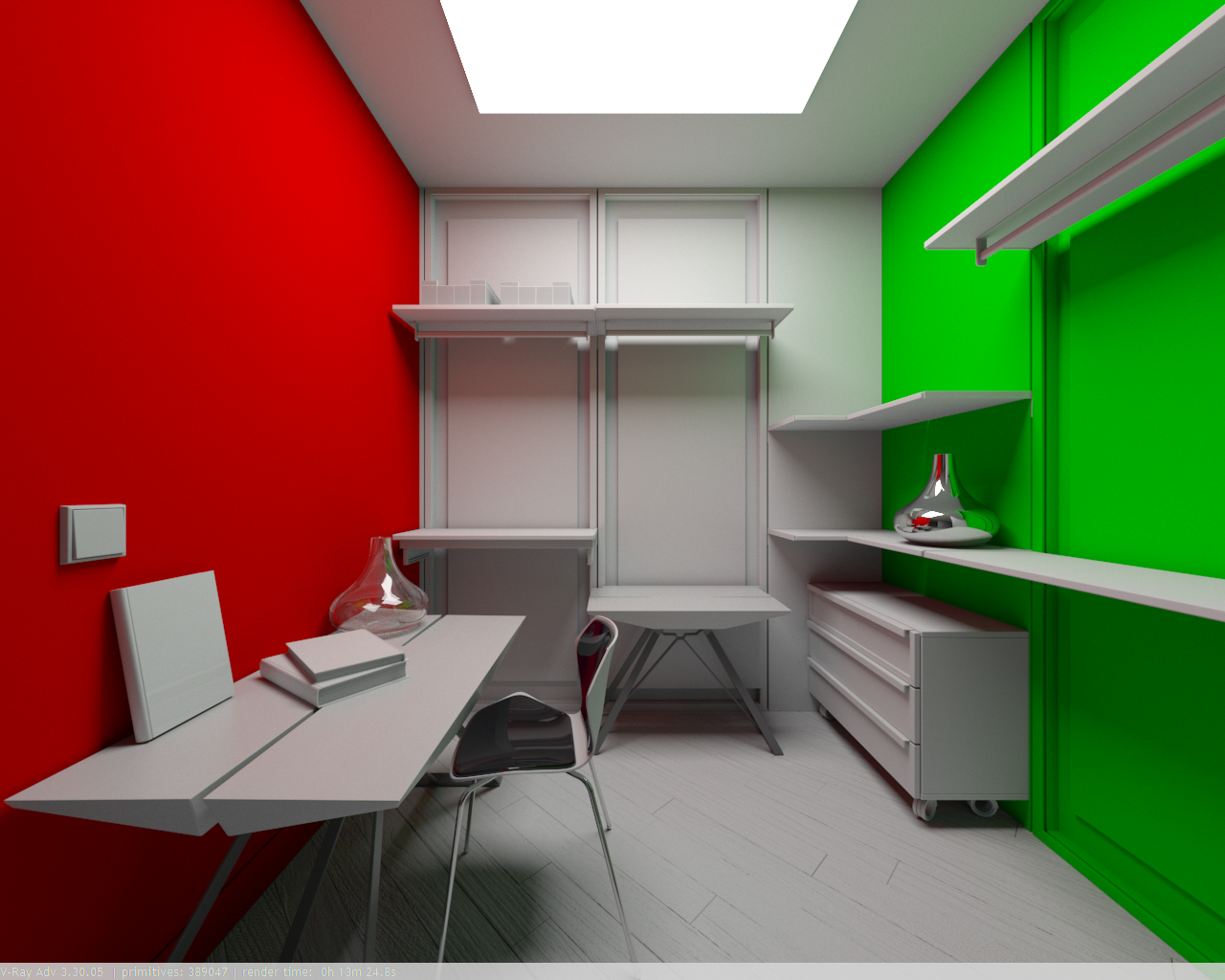 Brute force GI
Brute force GI
Brute Force Depth: 4
The image is darker because only 4 light bounces are computed.
Notice the grain and the long render time.
Render time: 13m 24.8s
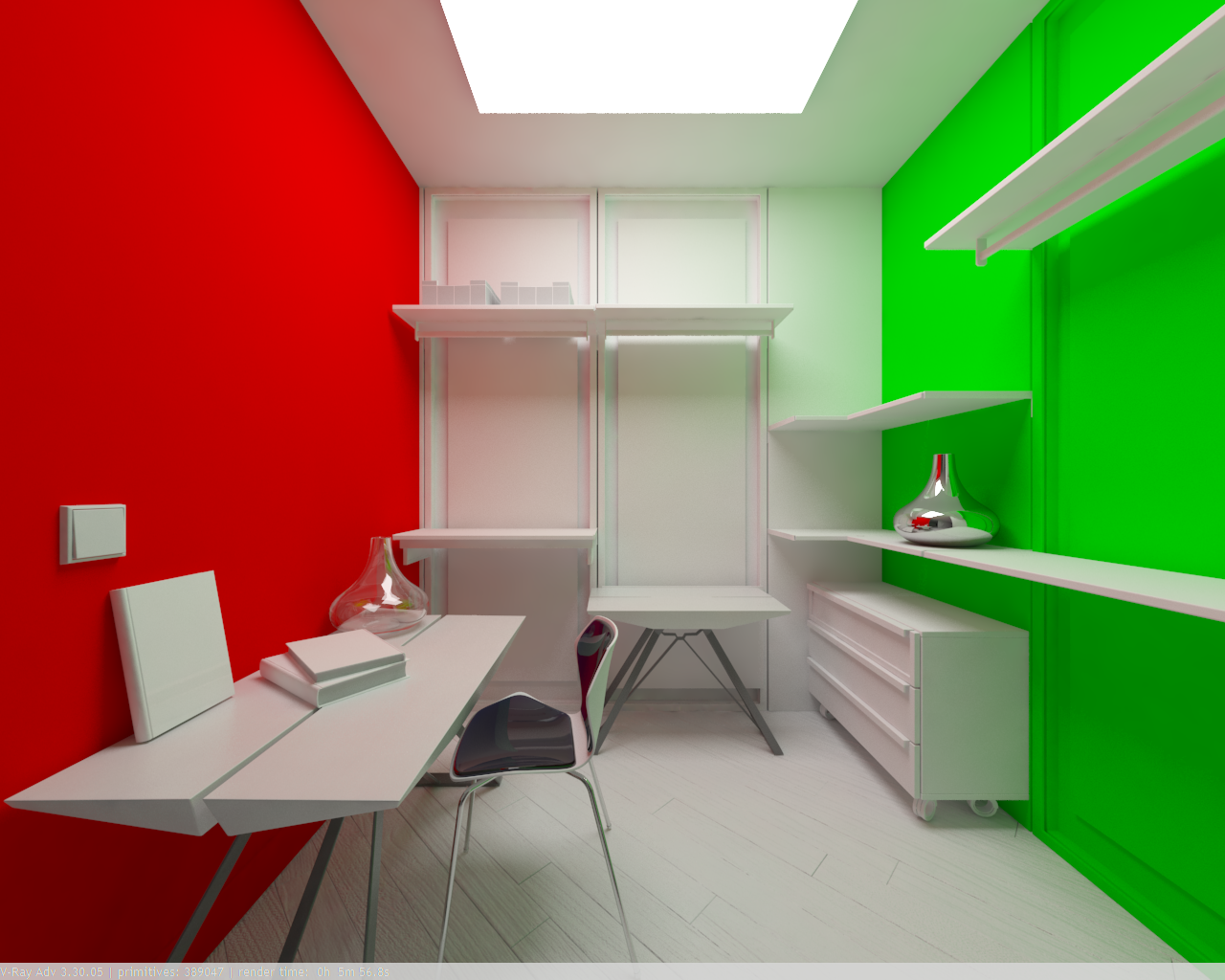 Irradiance map + brute force GI
Irradiance map + brute force GI
Brute Force Depth: 4
The grain is gone, although the GI is a little blurry.
Render time: 5m 56.8s
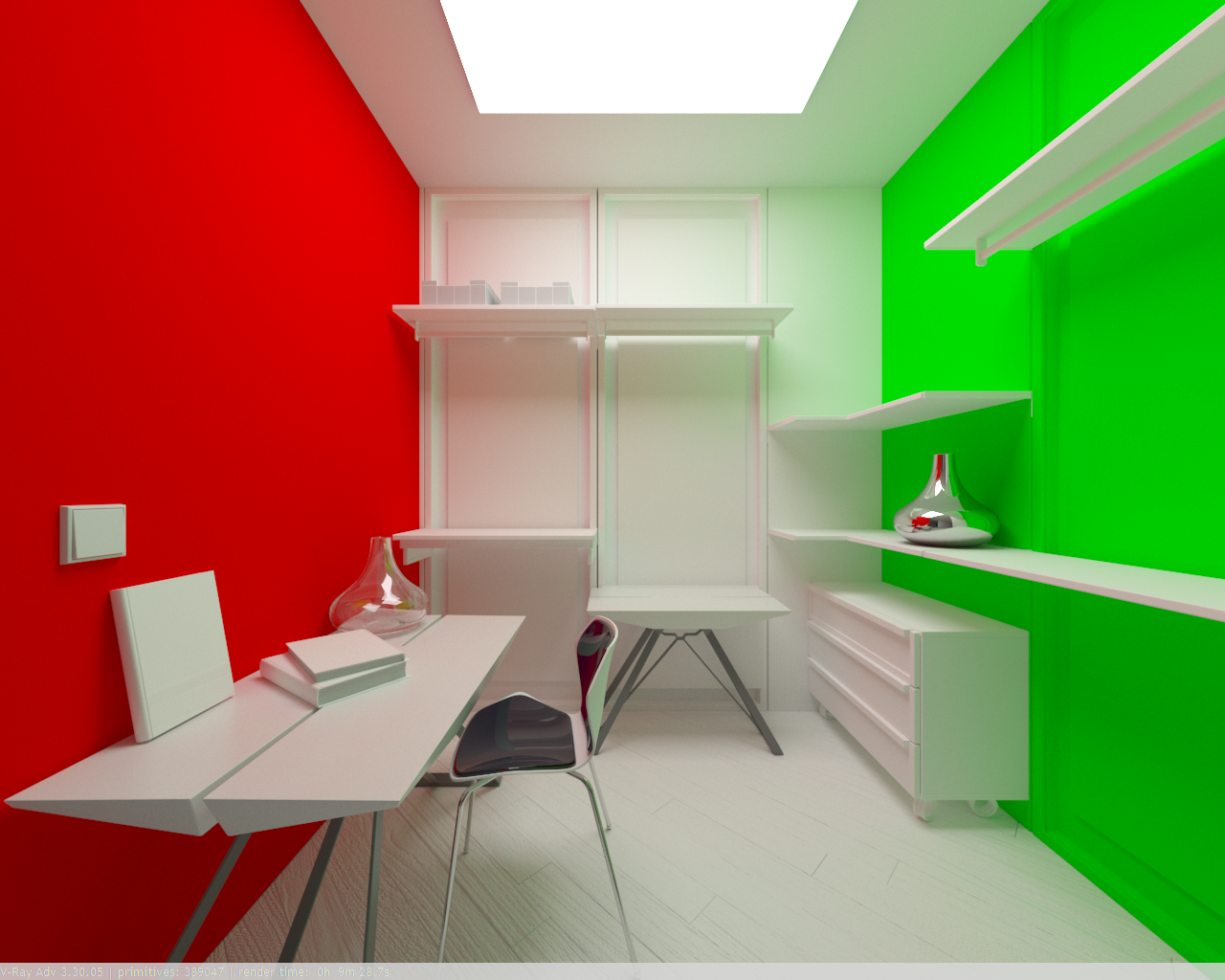 Brute force GI + light cache.
Brute force GI + light cache.
There is some grain in the GI but rendering is a lot faster than with brute force GI alone.
Render time: 9m 28.7s
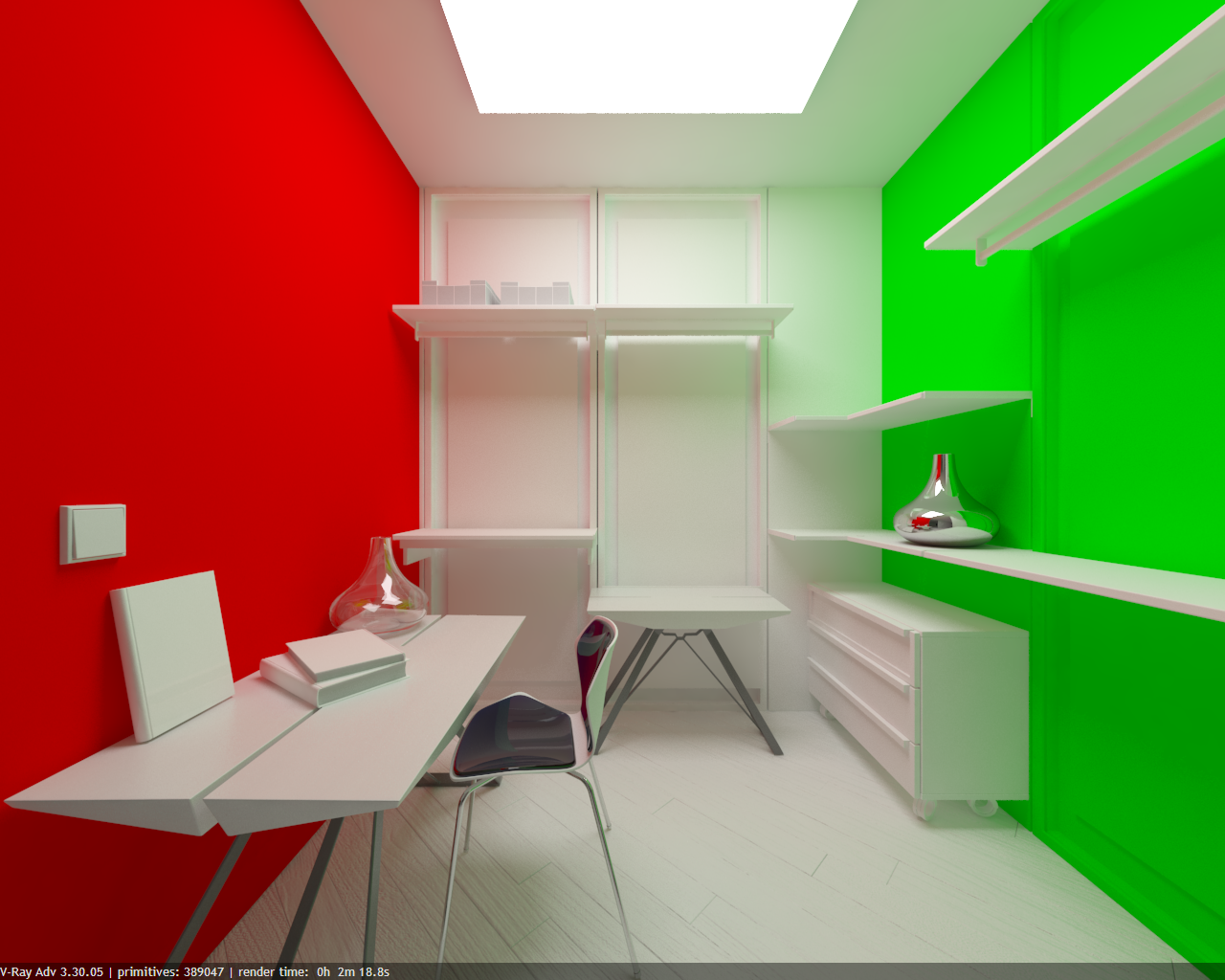 Irradiance map + light cache.
Irradiance map + light cache.
Render time: 3m 3.5s